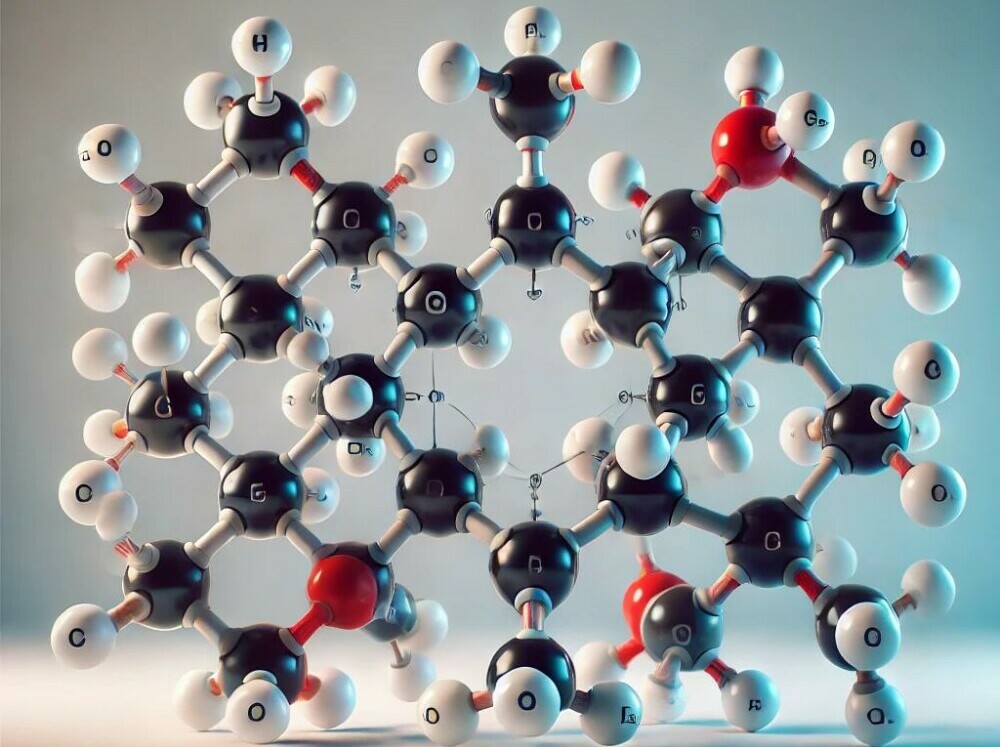Alpha Lipoic Acid (ALA) may sound like a topic from a chemistry textbook, but it’s a crucial compound that your body requires. Discovered in the 1950s, this antioxidant has become increasingly popular in the health community because of its wide-ranging benefits.
So, what’s the deal with ALA? Simply put, it’s a fatty acid your body naturally produces. However, here’s the catch: while your body makes it, having additional ALA can significantly boost your health in ways that may surprise you. It’s like a personal boost pack for your body.
One remarkable aspect of ALA is its versatility. It harmonizes with water-soluble and fat-soluble environments, enabling it to work effectively throughout the body. This feature distinguishes it from other antioxidants, highlighting its importance in preserving overall health.
Regarding the advantages, get ready because the list is extensive. ALA aids in everything from combating inflammation to enhancing nerve function. It has also been found to help manage levels of blood sugar, a crucial factor for those managing diabetes.

Let’s pay attention to its role in heart health. ALA helps reduce oxidative stress, a contributing factor in numerous forms of heart disease. Protecting your cells from damage ensures that your heart functions smoothly. And it’s also beneficial for your skin. A bit of ALA can aid in achieving a healthy glow by combating free radicals contributing to skin aging.
Alpha Lipoic Acid is akin to the Swiss Army knife of antioxidants. Whether you aim to enhance your overall health, address specific conditions, or gain an extra advantage, considering ALA is worthwhile.
Detailed Structure of Alpha Lipoic Acid

Alpha Lipoic Acid (ALA) isn’t just like any other antioxidant; it’s a powerful compound with a unique structure that makes it stand out. ALA is a sulfur-containing fatty acid composed of carbon, hydrogen, and oxygen at its core. Its powerful ability to neutralize harmful molecules in the body is attributed to the sulfur atoms, which effectively shield cells from the destructive impact of free radicals. What sets ALA apart is its capability to function in water-soluble and fat-soluble environments, allowing it to move through different body parts, repair damage, and neutralize harmful substances in fatty tissues and blood.
Structurally, ALA contains a disulfide bond that opens up when combating free radicals and then closes back seamlessly. This process neutralizes harmful substances and revitalizes other antioxidants, such as Vitamins C and E, extending their positive impact.
Compared to other antioxidants, ALA is like the multitasker of the group, functioning in both watery and fatty environments. This versatility makes ALA a more comprehensive protector against cellular damage, oxidative stress, and inflammation. Ultimately, understanding ALA’s structure helps recognize its versatility and strength, similar to comprehending how an engine operates, which not only seems neat but also makes one realize the full capabilities of what’s inside.
Mechanisms of Alpha Lipoic Acid in Eye Health
Maintaining eye health relies greatly on antioxidants, with ALA being essential. Your eyes are constantly exposed to oxidative stress caused by UV light, pollution, and the natural aging process. This ongoing exposure can damage eye cells, resulting in issues like cataracts and age-related macular degeneration.

ALA plays a crucial role in combating these effects. Acting as an antioxidant, it neutralizes free radicals responsible for oxidative stress. By eliminating these free radicals, ALA helps protect the cells in your eyes from damage, thus supporting clear vision and overall eye health.
Its antioxidant properties aside, ALA boosts blood circulation to the tiny blood vessels in your eyes. Improved circulation facilitates the delivery of more oxygen and nutrients to your eye tissues, contributing to their overall health and functionality.
There is scientific evidence supporting ALA’s significance in maintaining eye health. For example, one study demonstrated that ALA supplementation improved the visual function in individuals with glaucoma, a condition that affects the optic nerve. Another study indicated that ALA may help slow the progression of diabetic retinopathy, an eye condition associated with diabetes.

Therefore, incorporating ALA into your daily regimen is a wise choice for your eyes. Its antioxidant strength and ability to increase circulation make it essential to preserving vision health, especially if managing conditions like glaucoma or diabetic retinopathy.
Benefits of Alpha Lipoic Acid for Vision and Eyesight Restoration

Alpha Lipoic Acid (ALA) is beneficial for your health and incredibly impactful for your eyes. One of the most noteworthy advantages of ALA is its capacity to protect against oxidative stress, which plays a significant role in eye conditions such as cataracts and age-related macular degeneration. ALA’s ability to counteract free radicals is crucial in preserving eye cells’ health and proper functioning.
Another remarkable benefit of ALA is its influence on visual sharpness. In simpler terms, it helps maintain a clear vision. Research indicates that incorporating ALA supplements into your routine can boost your visual sharpness and concentration. People with vision challenges can find this especially helpful.
ALA also performs exceptionally well in restoring damaged eye tissues. Due to aging, diabetes, or other health concerns, impaired eye tissues can profoundly affect vision. By enhancing circulation and delivering essential nutrients, ALA aids in the repair of these tissues, promoting better eye health.

You may be curious about real-world proof to support these claims. Rest assured, there is substantial evidence! Case studies have documented instances where individuals witnessed noticeable enhancements in their vision after integrating ALA into their daily regimen. The accounts range from reduced glare and improved night vision to the mitigated severity of diabetic retinopathy, offering abundant and uplifting stories.
Incorporating ALA into your daily regimen can revolutionize your eye health. Whether grappling with specific eye conditions or striving to maintain sharp vision as you age, ALA provides a robust, scientifically backed solution.
How To Incorporate Alpha Lipoic Acid into Your Daily Routine
Incorporating alpha lipoic acid (ALA) into your daily routine is simpler than you imagine. The first step involves understanding the recommended dosages. A dosage of 300 to 600 mg taken daily is deemed effective and safe for most adults. It is always highly recommended to seek personalized advice from your doctor based on your specific requirements.

Regarding sources, you can obtain ALA through dietary means or by choosing supplements. If you prefer acquiring ALA nutrients from food, seek out ALA in spinach, broccoli, and organ meats such as the liver. These foods offer a natural, albeit lesser, amount of ALA.
If you are inclined towards supplementation, ALA is accessible in capsule and tablet forms, which makes it quite convenient. Just follow the dosage guidelines on the label or those your healthcare provider gave. Consistency is essential, so aim to incorporate it into your daily routine.
While ALA is typically safe, it’s a good idea to be aware of possible adverse reactions. Certain people might encounter minor issues such as an upset stomach or a rash. If you notice anything out of the ordinary, it’s best to seek advice from your doctor.

For individuals specifically focusing on eye health, consider combining ALA with other eye-friendly antioxidants such as lutein and zeaxanthin. This combination can offer more comprehensive protection and enhancement. Health professionals frequently recommend eye-specific multivitamins containing these nutrients.
Maintaining healthy vision isn’t solely about ALA. It is crucial to regularly schedule comprehensive eye exams to maintain good eye health. In addition, incorporating a balanced diet that includes ample amounts of fruits, vegetables, and foods with reasonable quantities of omega-3 fatty acids is essential to support overall well-being, including eye health. Adding ALA to this mix can provide an additional advantage in preserving sharp and healthy eyes.
Thank you for reading my article about “Alpha Lipoic Acid Structure”, and I would love to receive your comments down below, in case of any.

